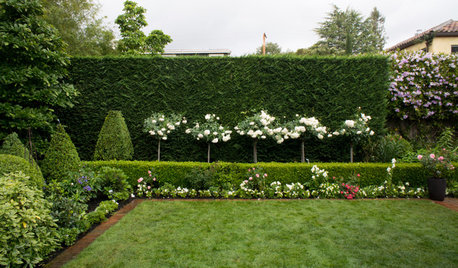As of last week I have been hired to look after and sort out the landscape at a 'new' historic home. We are putting the landscape back to around 1850 or so. In doing so we have moved a bunch of old boxwoods. Between droughts and organizational problems, we have some going red. Tests show that at least one has phytophthora/root rot. What I really need to know though is what are the ramifications of this. It is a soil virus and needs wet conditions but if one plant has it do we have to ditch the whole line??? If we correct the problem drainage can we treat the uninfected roots so that they survive?
Any help would be appreciated.
Kate







Embothrium
katycopseyOriginal Author
Related Professionals
Ballwin Landscape Architects & Landscape Designers · Lakewood Landscape Architects & Landscape Designers · South Elgin Landscape Architects & Landscape Designers · East Patchogue Landscape Architects & Landscape Designers · Frisco Landscape Contractors · Surprise Landscape Contractors · Maple Valley Landscape Contractors · College Park Landscape Contractors · Homewood Landscape Contractors · La Vista Landscape Contractors · Metairie Landscape Contractors · Salem Landscape Contractors · Siloam Springs Landscape Contractors · Tewksbury Landscape Contractors · Cincinnati Driveway Installation & MaintenanceEmbothrium
sam_md
katycopseyOriginal Author
Embothrium